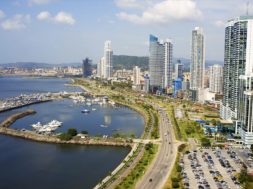Westminster lies on the northern bank of the River Thames and is within the City of Westminster. It is home to some of London’s most prestigious landmarks and visitor attractions. It has been the centre of the British Government for almost a millennium.
Westminster hotels are conveniently placed for the following attractions:
Westminster Abbey is a wonderful building built by Edward the Confessor and the traditional venue of the coronation of the kings and queens of England, including that of William the Conqueror in 1066. It is also a burial ground of Mary Queen of Scots, Queen Elizabeth I, Chamberlain, Gladstone and Chaucer to name but a few. Ben Jonson, the poet, was buried upright. The funeral service for Princess Diana was held at the Westminster Abbey but she was not buried there.
Big Ben is one of the most recognisable landmarks in London. Most people think that Big Ben is the name of the clock tower standing next to the Houses of Parliament, but it is actually the name of the Great Bell that chimes within it. The clock tower was constructed after the old Palace of Westminster was destroyed by fire on 16th October 1834. Watch out for the light above Big Ben – it illuminates when Parliament is sitting.
Houses of Parliament is also known as the Palace of Westminster which was built by Edward the Confessor in 1040. It was the principal residence of the kings of England since its construction until 1512.
The present Houses of Parliament were built after the Palace of Westminster was destroyed by fire in 1834 and it took about 30 years to complete. Its existing buildings contain about 1,200 rooms, 100 staircases and over 2 miles of passages.
Parliament Square is the square located opposite the Houses of Parliament and Big Ben. It is a tourist magnet and attracts hordes of camera-toting visitors every day. It is also a venue of large scale protests such as the anti-capitalist May Day protest in 2000 and the anti-war protest in March 2003. There are also lots of statues of famous politicians including Abraham Lincoln, Sir Winston Churchill and Nelson Mandela.
The London Eye, also known as the Millennium Wheel, has been the most popular paid tourist attraction in the UK. Standing at a height of 135 metres, it is the largest ferris wheel in Europe, It lets people climb above the city and enjoy the panoramic view of Westminster and the rest of London. Since 1st January 2005, the London Eye has been the focal point of London’s New Year celebrations, with firework displays welcoming in the New Year, and involving fireworks firing from the wheel itself.
The Cenotaph is a War memorial located in Whitehall in the vicinity of Downing Street. A remembrance service is held here every year on the Sunday nearest to 11th November at 11.00am to commemorate the War Heros who died in the two world wars. More than one million men and women from Britain and the Commonwealth died in World War I between 1914 and 1918, and nearly 500,000 in World War II from 1939 to 1945.
Downing Street is named after Sir George Downing who bought the land and built the houses on it in 1680. Traditionally, No. 10 Downing Street has been the official residence of British Prime Ministers and No. 11 Downing Street the official residence of the Chancellor of the Exchequer, since 1732. However, for a period of about 10 years when Labour came to power in 1997, the then Prime Minister, Tony Blair, and his Chancellor of the Exchequer, Gordon Brown, switched residences to enable the Prime Minister’s growing family to have more room.
Horse Guards is Whitehall’s biggest tourist attraction. The Trooping of the Colour, where the Queen inspects her troops is held here every year on the Queen’s official birthday, on the third Saturday of June. The Household Cavalry mounts the guard here (10.00am – 4.00pm daily). The Changing of the Guard takes place every day (Monday to Saturday) at 11.00am and Sunday at 10.00am. This is different from the Changing of the Guard at Buckingham Palace.
Trafalgar Square commemorates England’s victory over France at the Battle of Trafalgar in 1805. Nelson’s Column, built in 1842 and standing at 170 feet tall, is in the centre of the square with four large lions guarding it at the base of the column. Today, Trafalgar Square is one of the city’s most vibrant open spaces and provides a platform for new artistic performances and events. Visitors to Trafalgar Square used to enjoy feeding pigeons before the authorities put a ban to this popular activity.
Admiralty Arch on the south-west of Trafalgar Square, incorporated offices and residents for the Sea Lords at the time. It was designed by Sir Aston Webb in 1910 and completed in 1911 to provide an impressive ceremonial archways and form a spectacular entrance to The Mall leading up to Buckingham Palace. In 2000, the Cabinet Office moved into offices in the building, while maintaining its headquarters on Whitehall.
Buckingham Palace is the official London residence of the British monarch. When the Queen is in residence, the Royal Standard flag is raised. You can watch the Changing of the Guard for free at 11.30am every morning during summer and every other day during winter (weather permitting). Regular exhibitions take place at the Queen’s Gallery to enable the public to see one of the finest private collections of art and antiques in the world.





